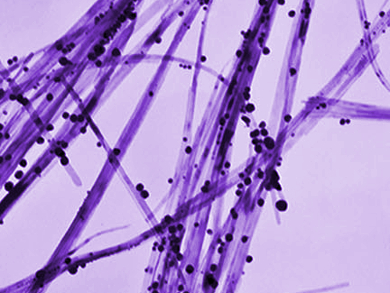Nanostructured materials are widely employed in the biomedical field. From drug delivery to imaging techniques, such small-scale materials have an array of possible applications. Silver, in particular, has a long-standing and wide-spread history in medicine, being a well-documented antibacterial and antimicrobial agent.
Ying‐Jie Zhu, Shanghai Institute of Ceramics, China, and colleagues have made free-standing paper that contains silver nanoparticle-infused ultralong hydroxylapatite (HAP) nanowires (pictured). Hydroxylapatite is the main mineral component of teeth and bones of vertebrates, with essentially no toxicity. The group had previously reported the successful synthesis of HAP-containing paper that was fire-resistant and could be used for printing and writing, although it is usually difficult to make a free-standing and flexible inorganic paper.
By decorating silver nanoparticles onto the ultralong HAP nanowires, the researchers have made a paper that could have applications in the medical field. As well as being highly flexible, it possesses good antimicrobial activity against Gram-negative and Gram-positive bacteria, low cytotoxicity and, thanks to the HAP nanowires, excellent biocompatibility. Decoration was achieved in a one-step solvothermal method that allowed easy control of particle size and loading content of the silver nanoparticles. The decorated nanowires were then used as building blocks for the facile production of the paper material.
- One-Step Synthesis of Silver Nanoparticle-Decorated Hydroxyapatite Nanowires for the Construction of Highly Flexible Free-Standing Paper with High Antibacterial Activity,
Zhi-Chao Xiong, Ying-Jie Zhu, Fei-Fei Chen, Tuan-Wei Sun, Yue-Qin Shen,
Chem. Eur. J. 2016.
DOI: 10.1002/chem.201601438




